Antique luxury copper vase handmade qalam zani qajar middle eastern
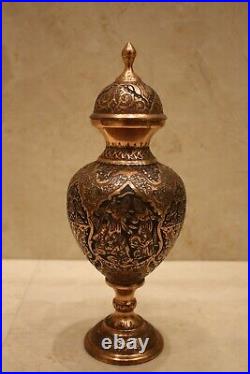
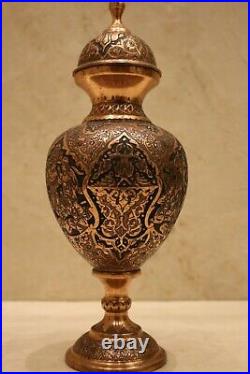
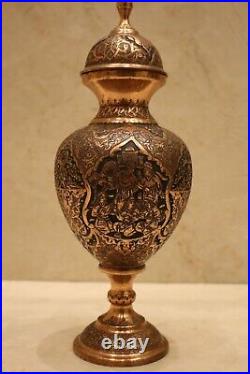
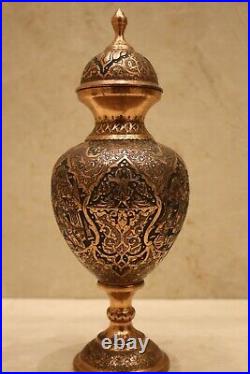
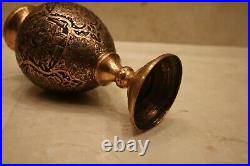
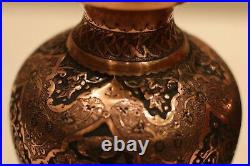

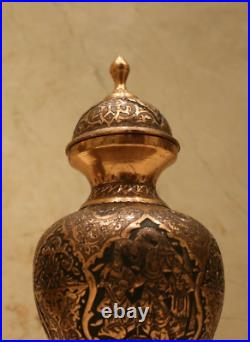
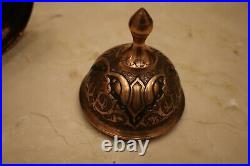

Antique luxury copper vase handmade qalam zani qajar middle eastern. Height : 32.5 cm - 12.79 inch. Width : 12 cm - 4.72 inch. Qalamzani (also Ghalamzani) is ancient metalwork art. It is engraving by chisels and hammers on different metals such as gold, silver, copper, brass, and some alloys. Its origin dates back to 5-7 thousand years ago; though its documented history goes back to Sassanid era, about 700 A.
In Achaemenid era, the golden age of metalworking, different methods of metalworking developed so greatly that influenced over next centuries and millenniums. After Islam, Qalamzani was still prevalent. Unique bird and animal shaped vessels have survived during this period.
Qalamzani was chiefly flourished in Seljuk and Safavid dynasties. One of the most special metalwork in Seljuk period was inlaying silver and red copper on brass and bronze. Utensils made of copper and bronze as well as steel doors and windows for religious and sacred places were common in this era.
The designs mostly included winged animals with lion heads, the plants and birds, the courtier parties and fights and hunting, dancers, musicians and musical instruments, engraved on the gold and silver. Safavid metalwork was produced so elaborately that gained the world reputation, and it was exported to different parts of the world at that time. Qalamzani bowl with the bird and flower design. Though there are different methods for Qalamzani, all of them have the same process.
To engrave, the craftsman covers the back side of the work with tar to prevent making much noise or puncture. Then, the favorite design is copied on the surface of the work. When the designs are engraved, the craftsman detaches the tar by heating, and then covers the grooves and the chiseled area with charcoal powder. The designs usually include the geometric, nature, human, animal shapes and miniature. After cleaning and polishing the black lines, the design appears on the surface of the work. Qalamzani is usually done on plates, trays, vases, etc. Different tools are used for Qalamzani such as various chisels, hammer, anvil, caliper, bending machine and so on.We try to describe all items accurately and give good visual support through photographs and text. Please check all pictures; they are a major part of the description and best indication of condition.
Our goal is to satisfy the customer.